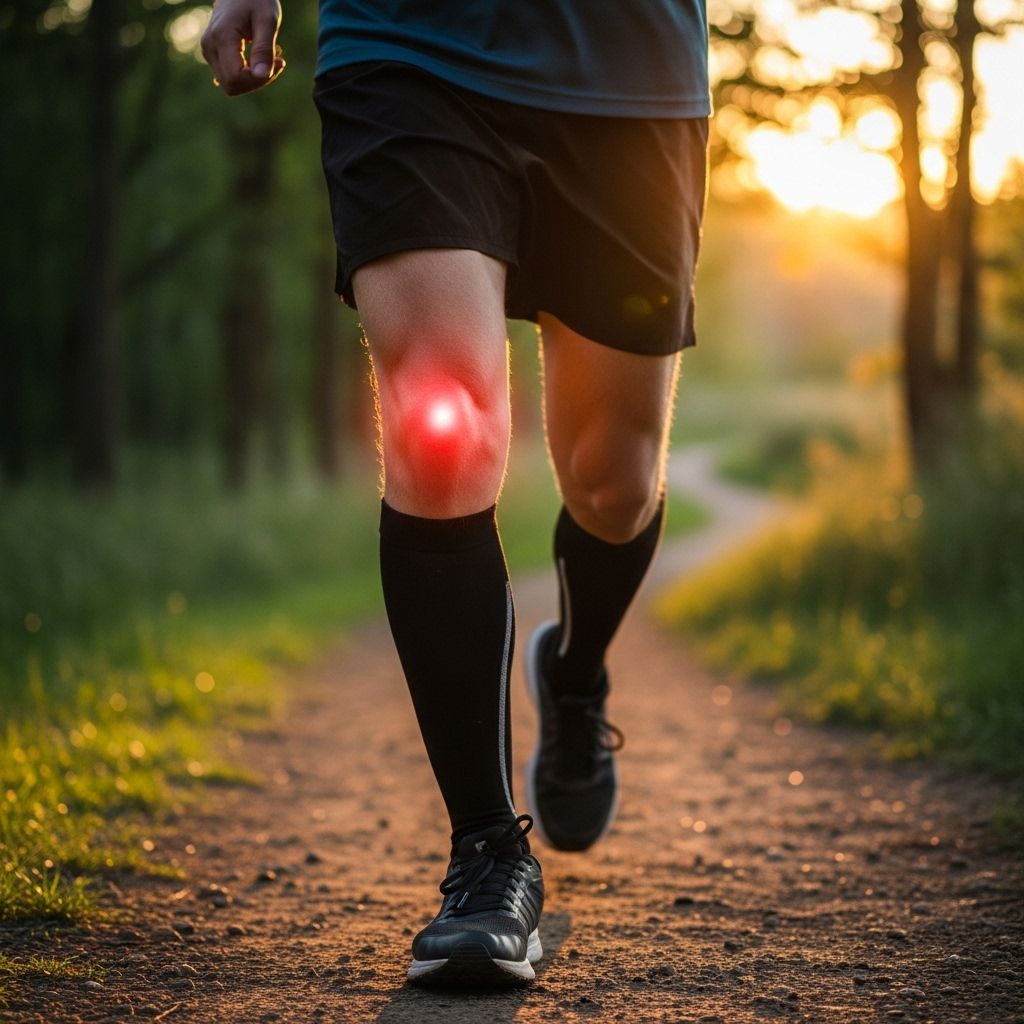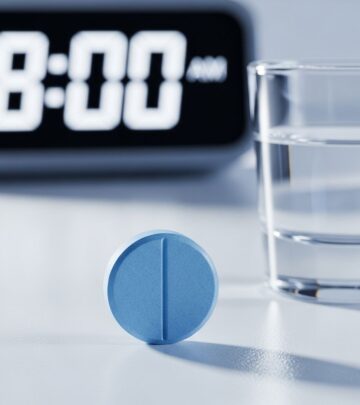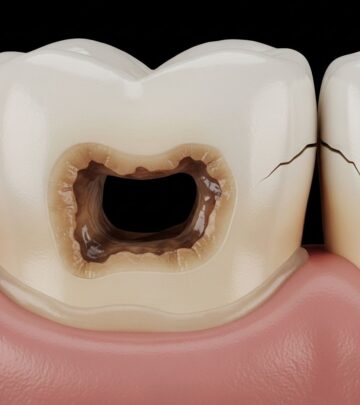Knee Pain and Other Running Injuries: Causes, Prevention, and Recovery
Learn about common knee and running injuries, ways to prevent pain, and effective approaches for safe recovery and strong running.

Running is an excellent way to stay fit, manage weight, and boost mental health. However, because it is a weight-bearing, repetitive exercise, runners often encounter knee pain and other injuries. Understanding the causes, prevention techniques, and treatment options for these injuries is crucial for safe, long-term participation in running.
Common Running Injuries
Both beginners and experienced runners can suffer from a variety of injuries, often exacerbated by overuse, improper technique, or inadequate strength in supporting muscles. Here are several of the most common injuries among runners, with a special focus on knee pain:
- Runner’s Knee (Patellofemoral Pain Syndrome)
- Pain at the front of the knee, around the kneecap (patella).
- Often made worse by running, squatting, or climbing stairs.
- Caused by muscle imbalances, poor running technique, or excessive training loads.
- Treatment: Rest, over-the-counter painkillers, physiotherapy, and specific knee-strengthening exercises.
- Chondromalacia Patella (CMP)
- Softening or breakdown of cartilage under the kneecap.
- Pain often worsens when walking down stairs or after sitting for long periods.
- Associated with overuse, poor alignment, or injury.
- Treatment: Relative rest, anti-inflammatory medications (NSAIDs), targeted physiotherapy.
- Patellar Tendinopathy (Jumper’s Knee)
- Pain and tenderness below the kneecap.
- Common in runners and jumpers due to repetitive stress on the tendon.
- Treatment: Pain management, activity modification using the pain activity ladder, gradual exercise program tailored to the injury stage.
- Iliotibial Band (ITB) Syndrome
- Pain on the outer side of the knee.
- The IT band rubs against the femur, causing irritation.
- More common in long-distance runners or those increasing their mileage or speed abruptly.
- Treatment: Rest, stretching, foam rolling, and strengthening of hip and gluteal muscles.
- Knee Ligament Injuries (ACL/PCL)
- Injuries to ligaments such as anterior cruciate ligament (ACL) or posterior cruciate ligament (PCL) often result from twisting or abrupt directional changes.
- Symptoms include pain, swelling, a feeling of instability, or a ‘pop’ sound at the time of injury.
- Treatment: RICE protocol (rest, ice, compression, elevation), physiotherapy, possible surgical intervention for severe cases.
- Kneacap Bursitis
- Inflammation of the bursa (fluid-filled sacs) in front of the kneecap.
- Caused by repetitive friction, muscle tightness, or impact injury.
- Treatment: Rest, ice application, NSAIDs, and sometimes aspiration of excess fluid.
- Kneecap Subluxation or Dislocation
- The kneecap slips out of its normal track on the femur, often after a blow or abrupt movement.
- Symptoms include severe pain, deformity, and loss of knee function.
- Treatment: Reduction by a healthcare professional, immobilization, and rehabilitation.
Risk Factors for Running Injuries
Certain factors increase the likelihood of developing knee pain and running-related injuries. Awareness of these can help in injury prevention:
- Overuse: Increasing volume or intensity of running too quickly places excessive strain on ligaments, tendons, and cartilage.
- Muscle Imbalances: Weak or tight muscles around the knee, hips, or core lead to abnormal movement patterns.
- Poor Running Technique: Incorrect foot striking or excessive force through the knees.
- Inadequate Footwear: Worn-out or unsupportive shoes fail to absorb impact properly.
- Running on Hard or Uneven Surfaces: Increases impact forces or the risk of twisting injuries.
- Previous Knee Injuries: Old injuries may predispose runners to re-injury or chronic pain.
Ways to Prevent Knee Pain and Running Injuries
Prevention is better than cure. Integrate these habits and modifications to reduce your risk:
- Gradually Increase Training: Follow the 10% rule: do not increase weekly mileage or intensity by more than 10% to allow the body to adapt.
- Warm Up and Cool Down: Perform dynamic stretches before running and static stretches after, targeting major muscle groups.
- Strength and Flexibility Training: Include exercises that focus on the quadriceps, hamstrings, gluteals, and calves. Adjust training to address muscle imbalances and improve flexibility.
- Cross-Training: Mix running with low-impact activities like swimming or cycling to maintain fitness while minimizing repetitive knee stress.
- Appropriate Running Shoes: Replace shoes regularly and select models that provide adequate support for your foot type.
- Choose Softer Surfaces: Alternate hard pavement with softer trails, tracks, or treadmills to reduce knee impact.
- Listen to Your Body: Do not ignore persistent pain—early management prevents escalation of injuries.
Table: Risk Factors vs. Prevention Strategies
| Risk Factor | Prevention Strategy |
|---|---|
| Overuse (fast training increases) | Gradually build up mileage and intensity |
| Muscle weakness or imbalance | Regular strength and flexibility training |
| Poor footwear | Use supportive and properly fitted running shoes |
| Hard surfaces | Run on tracks, grass, or use treadmills when possible |
| Previous injuries | Address old injuries fully before returning to running; physiotherapy |
Treatment and Recovery After Running Injuries
How you manage knee pain immediately after injury and in the following weeks is essential for quick recovery and a safe return to exercise:
- Rest: Avoid activities that trigger pain, but keep gently moving the joint as comfort allows.
- Ice: Apply an ice pack or a bag of frozen peas wrapped in a cloth to the knee for 15 minutes every couple of hours during the first 48 hours post-injury.
- Compression: Use an elastic bandage to help limit swelling.
- Elevation: Keep your knee raised on a pillow when sitting or lying down to further reduce swelling.
- Pain Relief: Over-the-counter painkillers such as ibuprofen can reduce discomfort and inflammation—consult your GP or pharmacist as needed.
Returning to Activity
Recovering from a knee or running injury takes time. Rushing recovery increases the risk of re-injury or chronic pain. Follow these recommendations:
- Begin light exercise, such as walking or swimming, after acute pain and swelling subside.
- Gradually progress to cycling or gym-based strength training, focusing on the legs and core.
- Only return to running when you can do lower-impact activities without pain, your knee has regained full movement, and strength matches your uninjured side.
- For sports involving twisting (like football or rugby), participate in training drills before playing in matches.
Significant sprains may require 4–12 weeks or longer of recovery and graduated rehabilitation.
Knee Strengthening Exercises for Runners
Regularly performing knee and lower limb strengthening exercises improves running resilience and helps avoid injury recurrence. Typical exercises include:
- Quad Sets / Straight Leg Raises: Strengthen the thighs without putting pressure on the knees.
- Bridges: Activate and strengthen gluteal and core muscles.
- Step-Ups: Simulate running movement and build up knee, hip, and ankle stability.
- IT Band Stretches: Reduce tightness along the outer thigh.
- Hamstring and Calf Stretches: Maintain flexibility and reduce strain across the knee joint.
Follow a graded exercise programme—starting with early-stage supportive exercises and progressing through more challenging ones only as pain and strength allow. Improvement usually takes 6–12 weeks of consistent adherence.
When to Seek Medical Help
Most mild running injuries resolve with conservative self-care. However, prompt professional evaluation is required when:
- Pain is severe, persistent, or worsening after a week of home treatment.
- The knee is visibly swollen, deformed, or unable to bear weight.
- You experience a locking, catching, or giving way sensation in the knee.
- There are any signs of infection: redness, warmth, fever, or pus.
Your GP or a physiotherapist can assess the injury, advise further investigations if needed, and tailor a rehabilitation plan. In some cases, referral to an orthopaedic specialist may be required.
Frequently Asked Questions (FAQs)
Q: What causes knee pain in runners?
A: Knee pain can result from overuse, muscle weakness or imbalance, poor running technique, inadequate footwear, or previous knee injuries. It may indicate conditions like runner’s knee, tendinopathy, or ligament injury.
Q: How long does it take for knee injuries to heal?
A: Mild injuries usually improve within a few weeks, but a significant injury may require 6–12 weeks or even longer for full recovery, depending on the severity and management.
Q: Can I continue running with mild knee pain?
A: Mild pain may subside with rest, proper footwear, and strengthening exercises. If pain persists or worsens with activity, take a break and seek advice from a healthcare professional.
Q: What is the best way to prevent running injuries?
A: Gradually increase running intensity, focus on strength and flexibility, wear supportive shoes, warm up and cool down, and pay attention to pain signals from the body.
Q: When should I seek medical attention for knee pain?
A: Immediate medical attention is needed for severe pain, significant swelling, inability to bear weight, or if self-care does not improve symptoms after a week.
Further Advice and Resources
- Consult a physiotherapist for personalized exercise routines and rehabilitation plans.
- Consider sports-specific running assessments or gait analysis to optimize form and reduce risks.
- Engage in regular strength training and cross-training, especially if you have a previous history of injury.
- For detailed exercise videos and early advice, refer to NHS musculoskeletal (MSK) physiotherapy resources online.
Taking an active approach to injury prevention, smart training, and early management of pain ensures the best outcomes for all runners. Safe running is sustainable running—invest in your body for a healthy, rewarding journey.
References
- https://www.ramsayhealth.co.uk/blog/orthopaedics/common-running-knee-injuries-and-how-to-treat-them
- https://www.nhslanarkshire.scot.nhs.uk/services/physiotherapy-msk/patellar-tendinopathy/
- https://www.leedsth.nhs.uk/patients/resources/early-advice-and-exercises-for-soft-tissue-injuries-of-the-knee/
- https://www.nbt.nhs.uk/our-services/a-z-services/emergency-department/ed-miu-patient-information/knee-injuries
- https://www.nhs.uk/live-well/exercise/knee-exercises-for-runners/
- https://www.berkshirehealthcare.nhs.uk/media/168327/knee_injury_leaflet.pdf
- https://www.mskdorset.nhs.uk/knee-pain/
- https://www.ruh.nhs.uk/patients/services/physiotherapy/documents/PHY026_Acute_knee_injury.pdf
Read full bio of Sneha Tete












